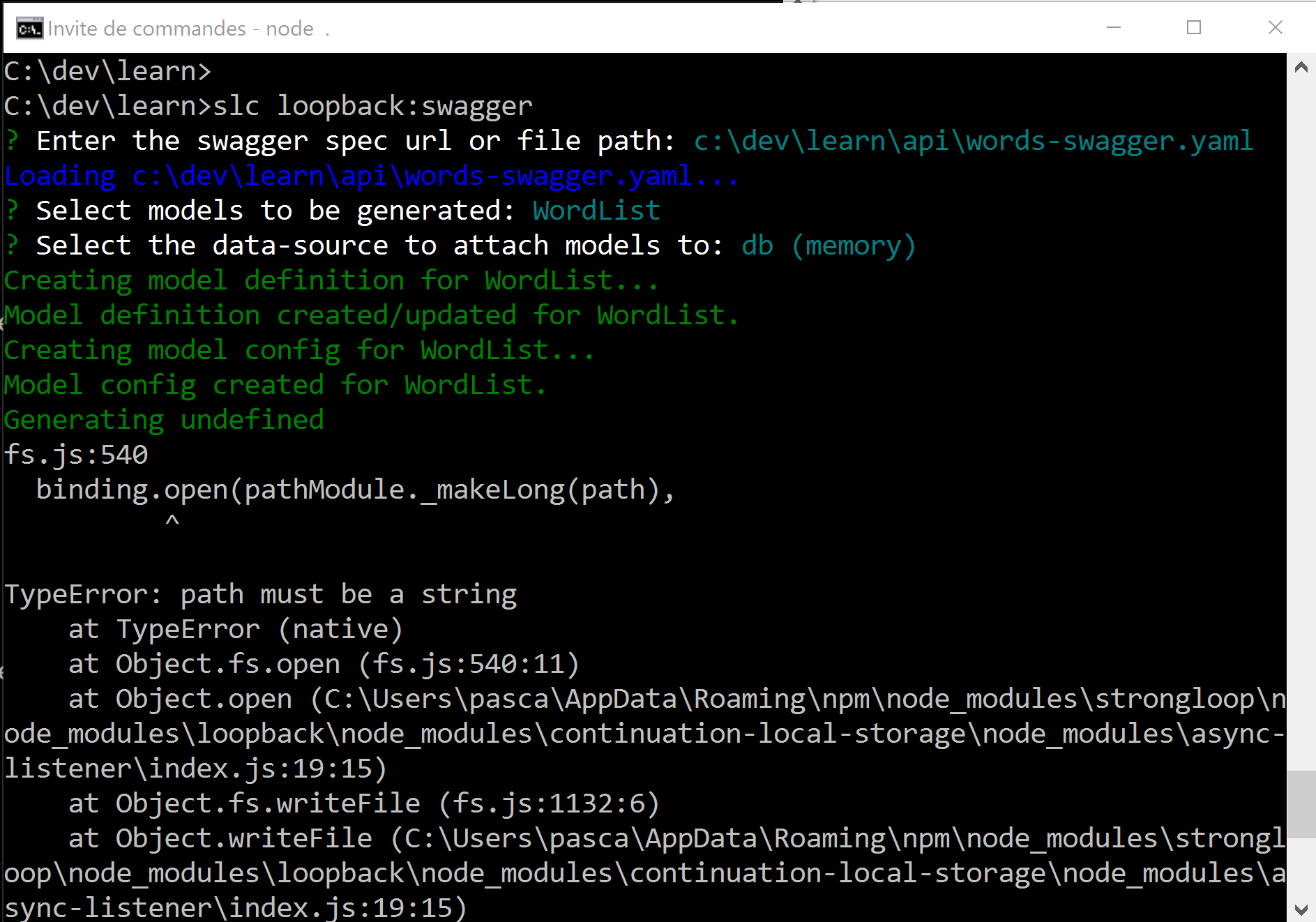In this post, I will connect the generated API (see Part 1) to my local MongoDB database and correct some errors that I’ve done on my swagger definition.
Fixing the swagger API definition
In my V0.1 WordList definition, the id field was defined as a String :
WordList:
type: "object"
properties:
id:
type: "string"
title: "Word list ID"
words:
type: "array"
title: "Words"
items:
$ref: "#/definitions/Word"
This won’t work as the id field is expected to be an integer field. The new V0.2
definition looks like this :
WordList:
type: object
properties:
id:
type: integer
format: int64
title: Word list ID
words:
type: array
title: Words
items:
$ref: '#/definitions/Word'
I also removed some paths entries that are no longer required but didn’t find a way to remove them all
without having SwaggerHub reporting en error.
Swagger generator
Since I modified my model, I ran the swagger generator again (after deleting the previous model). The generator ended with an error but it still worked :

Adding the MongoDB datasource
The next step is to configure the datasource to my local MongoDB database (installation is not shown here). Instead of running the generator, you can manually configure the database in the datasources.json file :
"learn": {
"host": "127.0.0.1",
"port": 27017,
"database": "learn_db",
"password": "",
"name": "learn",
"user": "",
"connector": "mongodb"
}
Connecting the model to the datasource
The step is really is easy, I only had to change to configuration in the model-config.json file :
"WordList": {
"dataSource": "learn",
"public": true
}
Testing my API
It’s now time to test my new API and see if it works. I will do this using the built-in API explorer :
http://localhost:3000/explorer/#/
I will add a new WordList. Leaving the id field empty will let MongoDB generate a new objectID :
curl -X POST --header "Content-Type: application/json" --header "Accept: application/json" -d "{
\"words\": [
\"requin\",
\"poisson\"
]
}" "http://localhost:3000/api/WordLists"
The response body :
{
"id": "56f58cc02dd5c18421bf03e5",
"words": [
"requin",
"poisson"
]
}
I did a check on the mongoDB command line :
C:\dev\learn>mongo
MongoDB shell version: 3.2.0
connecting to: test
> use learn_db
switched to db learn_db
> db.WordList.find()
{ "_id" : ObjectId("56f58cc02dd5c18421bf03e5"), "words" : [ "requin", "poisson" ] }
>
Next step
I found the exercise really easy to do and didn’t have to write much code to do this. The next step will be to add some security to this API.
comments powered by Disqus